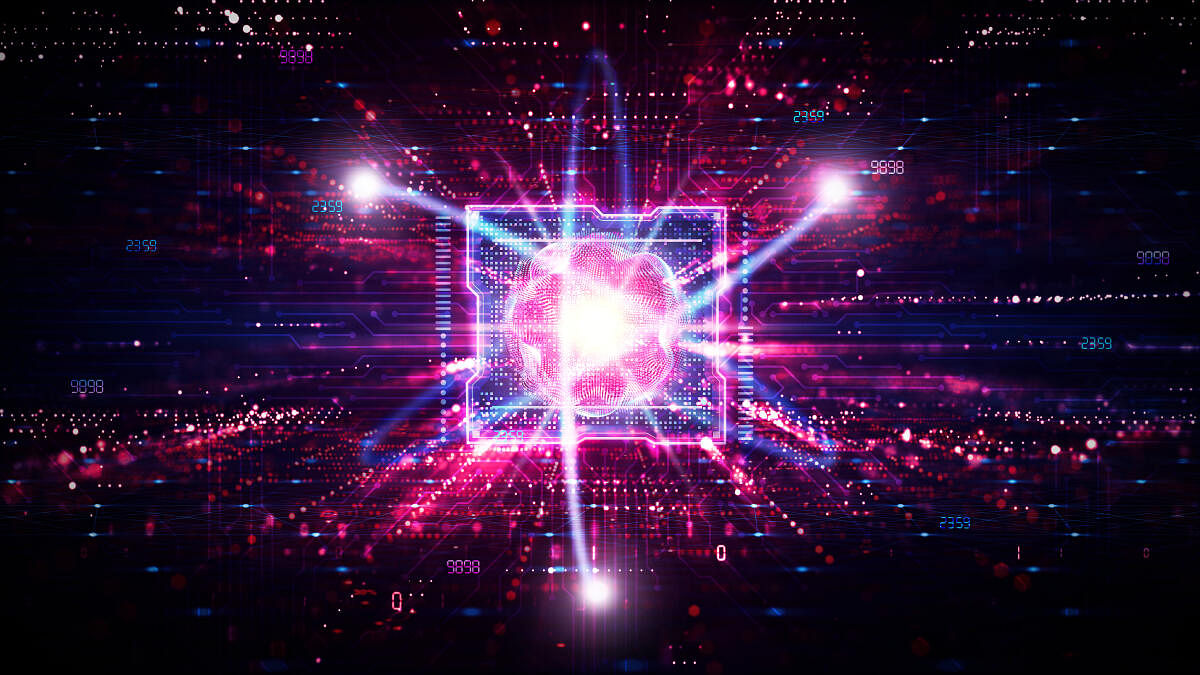
In the late 1970s, two young computer scientists and a mathematician at the Massachusetts Institute of Technology teamed up to find out a new algorithm for cryptography. They struggled for months without results. In April 1977, they returned home around midnight after celebrating a festival at another student’s house.
Unable to sleep, one of them settled on a couch and began to think about the problem. Suddenly, the mist disappeared, ideas crystalised and by the day-break much of a path-breaking paper was ready.
What Ron Rivest, Adi Shamir and Leonard Adleman formulated is widely known as RSA codes that rule the world of encryption. It is used almost wherever encryption is needed — banking, e-commerce and the stock market and missile launches.
It is impossible for classical computers to break the modern generation RSA encryptions. However, it is a child’s play for quantum computers. Encryptions that classical computers would take years to break can be unlocked within seconds using a quantum computer. IBM has made major progress in realising a commercial quantum computer and other corporations are catching up fast. Five countries have dedicated government-backed programmes in quantum technologies. India jumped onto the bandwagon last week.
A futuristic mission
The Union Cabinet cleared Rs 6,003-crore National Quantum Mission seeking to realise frontier technologies related to quantum computing, quantum communication and quantum sensing. The eight-year mission involving institutions and industry has four verticals — three on quantum computing, communication and sensing, and a fourth one on developing novel materials and devices that would aid in the three core programmes.
So how exactly quantum computation is different? The answer lies in the 88-year-old Schrodinger Cat experiment that introduced the concept of “quantum superposition” to the world.
In the binary world of classical computers every piece of data — be it text, photo or video — is broken down to a series of zeros and ones, and operations are performed one at a time to reconstruct them from such zeros and ones. While a three-bit system (0-1-0) in a conventional computer will mean three definitive states, a three-qubit (quantum bit) system in the quantum world will mean eight different states (111/000/011/101/110/001/010/ 100) operating in parallel since superposition allows all of these states to coexist at the same time. This makes quantum computers far more powerful than the classical ones.
While quantum computers are around (IBM offers one which needs time slots to be bought to use them), it may take several years before they become commonplace as there are stiff technical challenges to overcome. Entanglement is one of the foremost.
In a quantum computer, entanglement is used as a sort of computational multiplier for qubits. As one entangles more and more qubits together, the ability of a system to make calculations grows exponentially. But entanglement is also a point of weakness as the tiniest bit of interference — even one-decibel noise — can break the fragile correlation between two or more qubits. Qubits must only entangle with each other. The moment they entangle with the wider universe, they stop working.
“Currently entanglements are available only for a few microseconds. Technologies are needed to increase the entanglement for a longer time,” says Ajay Sood, Principal Scientific Advisor to the government and a key brain behind the Indian mission. “The logic gate architecture needs to be different for quantum computers and research is on to improve the gate output.”
Long-distance communication
The mission aims to make a 50-qubit system in the next three years, a 100-qubit system in five years and a 1000-qubit system in eight years. For a perspective, a 7-qubit system being developed by TIFR, DRDO and TCS is the best in India so far. IBM unveiled its 433-qubit Osprey chip in November and has a roadmap to launch a 1,121-qubit processor in 2023.
Indian researchers are better positioned in quantum communications. Communication between two parties at any measure of distance in the most secure manner is the aim of the development of long-distance Quantum Key Distribution techniques used in such communications. These include satellite-based and fibre-based approaches towards a hybrid quantum network.
While the conventional encryption and decryption of messages run the risk of breach of security from time to time, the laws of quantum physics when used on the communication lines, make them absolutely secure. Be it for banking, online transactions or defence, quantum communication is the future. Another benefit is that the core pieces of hardware needed are relatively low-cost and easily available.
Raman Research Institute, Bengaluru, ISRO, DRDO and IIT Delhi have demonstrated successful use of quantum communication in recent months, but the challenge is to replicate it over longer distances. Today, communicating over more than 100 km needs the use of costly repeaters, because of which alternatives are in demand. Meanwhile, RRI has signed an agreement with the Indian Navy for developing secure maritime communications using quantum technologies.
The plan
The third hub of the mission is Quantum Sensing and Metrology, which can revolutionise the fields of sensors and instrumentation. This vertical targets the development of advanced sensors capable of detecting magnetic and electric fields like never before, measuring time with unprecedented accuracies at atomic levels, and imaging biological systems and hidden objects with limited interventions. The fourth part of the mission will create quantum materials where some of the unique properties of quantum physics can be applied to achieve what a classical computer would limit.
The national mission follows the Department of Science and Technology’s Rs 250-crore scheme called Quantum Enabled Science and Technology programme to set up infrastructure at 51 laboratories and a quantum hub in Pune at a cost of Rs 170 crore. In the national mission, the funding will also come from DRDO. The Department of Space and the Department of Atomic Energy will contribute 30% of the cost. Infrastructure worth Rs 1,850 crore is to be set up. “The targets in the mission are very much achievable. We are not late in the quantum game,” Sood adds.
